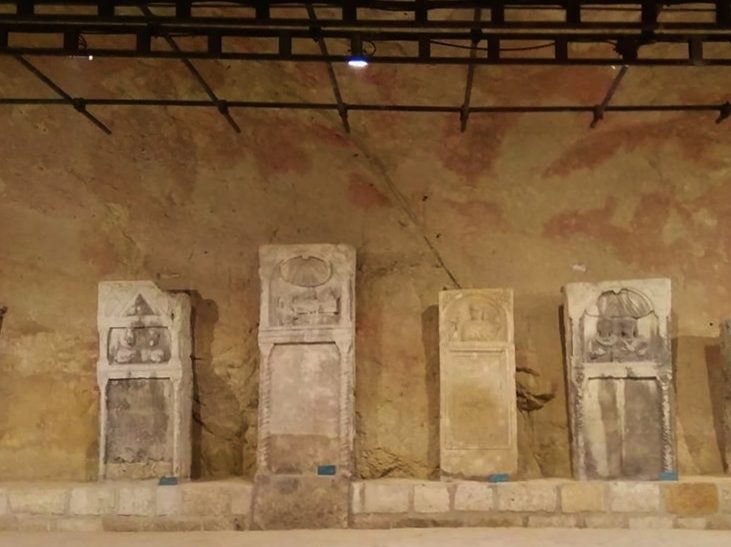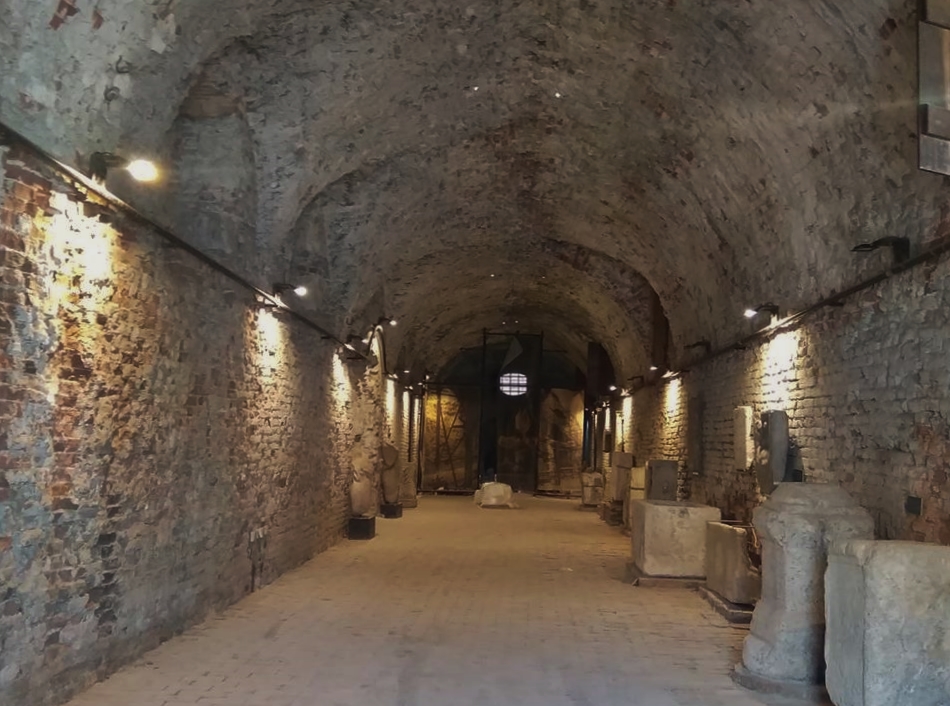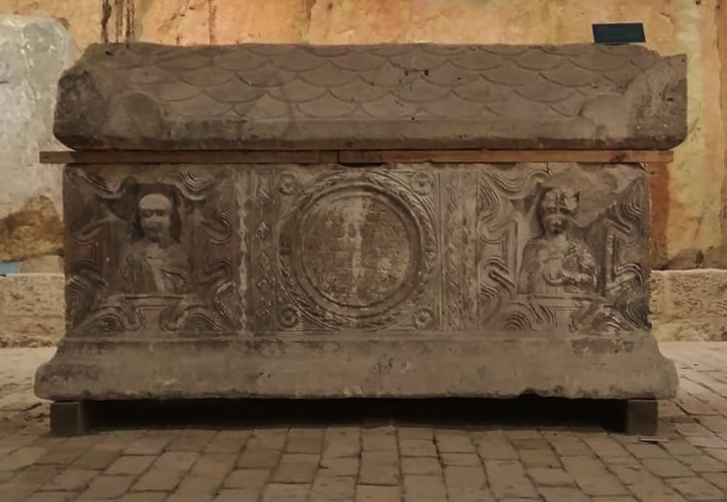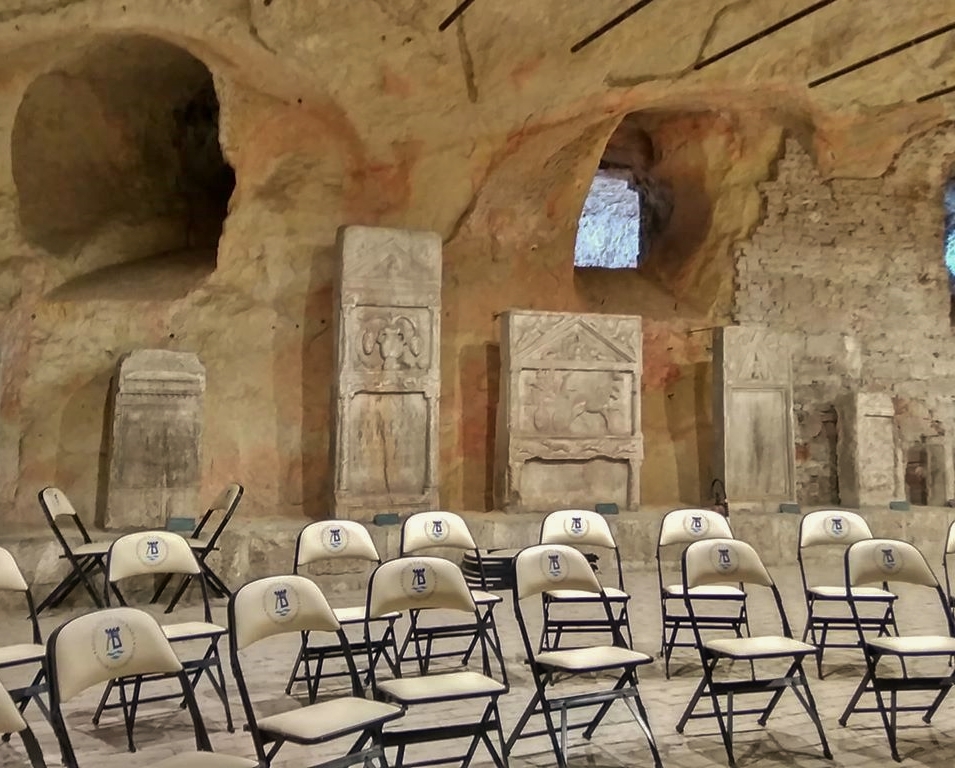WHERE IS IT?
The large gunpowder warehouse or lapidarium is located in the upper part of the Belgrade Fortress in the vicinity of the Victor monument and the fountain of Mehmed Pasha Sokolović.
THE HISTORY
The exhibition ареа of ancient heritage, known as Barutana or lapidarium, was built during the Austrian reconstruction of the Belgrade Fortress from 1718 to 1720, with the aim of making a safe shelter for gunpowder as soon as possible. The gunpowder warehouse is an underground space buried in a rock, around which a strong protective wall was built in the middle of the 18th century. In ancient times, there was a so-called Mithraeum- an ancient sanctuary dedicated to the god Mithras in this place. Today, the Great Gunpowder Warehouse has been partially renovated and arranged.

INTERIOR
The gunpowder warehouse consists of two halls supported by nine pillars and a large access corridor. After the return of the Ottomans to Belgrade in the middle of the 18th century, a wall was built that partially obscured the entrance to the space.
Each hall has an area of about 400 square meters, which was a great architectural endeavor in the 18th century. Today, only the first hall and part of the corridor serve as an exhibition space of ancient monuments, the so-called lapidarium. It exibits Roman monuments that testify to life in ancient Singidunum.

LAPIDARIJUM
Collection of ancient monuments in the lapidarium began as early as the founding of the National Museum in Belgrade in 1844, then the eldest archaeological collection in Serbia. The collection consists of objects discovered in the area of the ancient Singidunum, Kostolac-ancient Viminacium, Sremska Mitrovica-Sirmium, Kosmaj and other sites in Serbia. The objects that lapidarium exibts today are: stone monuments, the portrait statues, stelae, sarcophagi and altars. One of the sarcophagi stands out for its significance, because it represents an early Christian scene depicting Jonah rescued from a whale's womb. The sarcophagus dates from the 4th century from the area of Belgrade.
Jonin sarkofag

Jonin sarkofag


Written by Katarina Malešević
